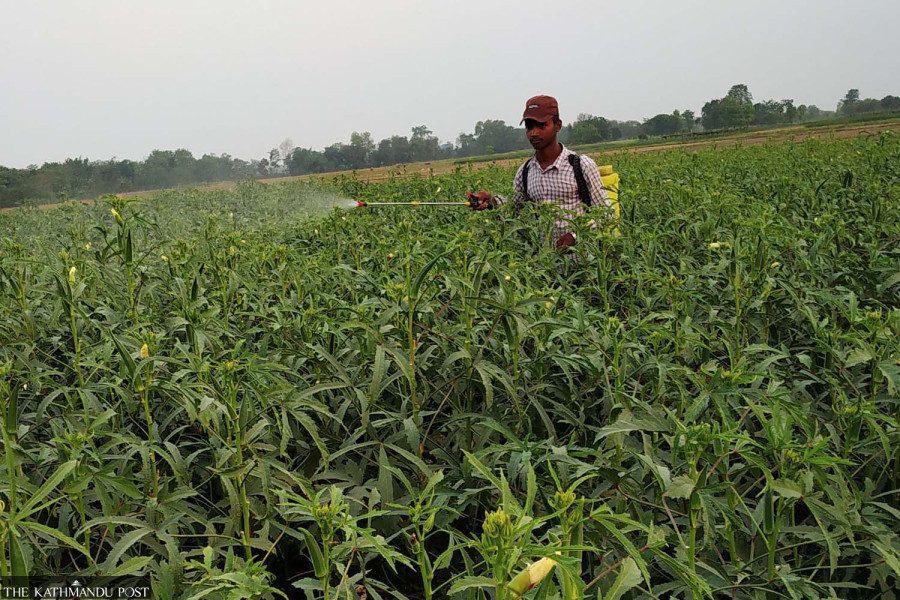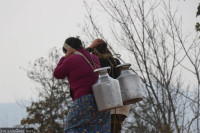Editorial
Poisonous pesticides
High levels of pesticides in vegetables exact a heavy toll on people and the environment.
Nepali vegetable markets may have seemingly fresh and green vegetables, but many are laced with toxic chemicals. Nepal started importing pesticides in the 1950s, but their import and use in agricultural practices have only increased over the years as new pest species have emerged due to climate change. While it is common to spray pesticides to boost crop growth and control pests, Nepali farmers often knowingly or unknowingly overlook safe pesticide practices for higher yields. In doing so, they not only put consumers’ health at risk but also pose a threat to the environment.
Although government laboratories have repeatedly warned about contamination, vegetables sold at the Kalimati Fruits and Vegetable Market in Kathmandu have again been found laden with harmful pesticides. For instance, this Monday, round chilli, known as akabare khursani in Nepali kitchens, was found to have high levels of harmful chemicals. As a result, over 30 kg of chilli were destroyed as they were deemed unfit for consumption, with organophosphate pesticides at 57.07 percent. The same applies to other vegetables.
Only last week, green pumpkin contained 45.59 percent, sponge gourd 65.03 percent, and cucumber had 52.92 percent of organophosphate pesticide. According to the Rapid Bioassay of Pesticide Residue (RBPR) Analysis Unit, contamination below 35 percent is safe; between 35 and 45 percent, vegetables may be edible only after a certain period. However, if the residue level is over 45 percent, such vegetables are unfit for eating.
All this partly boils down to how the farmers use these pesticides. Spraying pesticides on vegetables ready to harvest is a horrendous practice, yet this is widely done in Nepali farms. Doing so keeps vegetables fresh but results in high pesticide residue levels. However, if the farmers use the usable amount of pesticides and are mindful of the waiting period before taking their produce to the market, it is still edible.
That said, insufficient awareness among farmers has worsened the problem. Monitoring and testing mechanisms are highly centralised, with remote areas often lacking them. Even as good agricultural practices (GAP), which countries worldwide follow, are in place to ensure and enhance the safety, quality and sustainability of food production, such practices are rarely embraced in Nepal. Nor have successive governments been able to put a lid on the sale and use of banned chemicals such as organophosphates and carbamates.
Compared to pesticide use in developed countries, the amount is lower in Nepal. Their use is still excessive though. As many Nepali farmers are unaware of the safe use of pesticides, it is incumbent on local authorities to educate them. As vital is regulating the unscrupulous sale of harmful chemicals. The government has recently increased the daily limit of vegetables tested at the Kalimati lab to 17 to 18 varieties, up from seven to eight. This is commendable, but such practices must also be extended to other provinces and districts.
These simple steps could help save the environment and keep consumers, as well as farmers, safe from both immediate and long-term health harms of pesticides. The most viable way of reducing such indiscriminate use of pesticides would be by promoting organic farming. While organic pest controls are already in place, they must be expanded to make Nepal’s agriculture more sustainable.




 19.12°C Kathmandu
19.12°C Kathmandu














